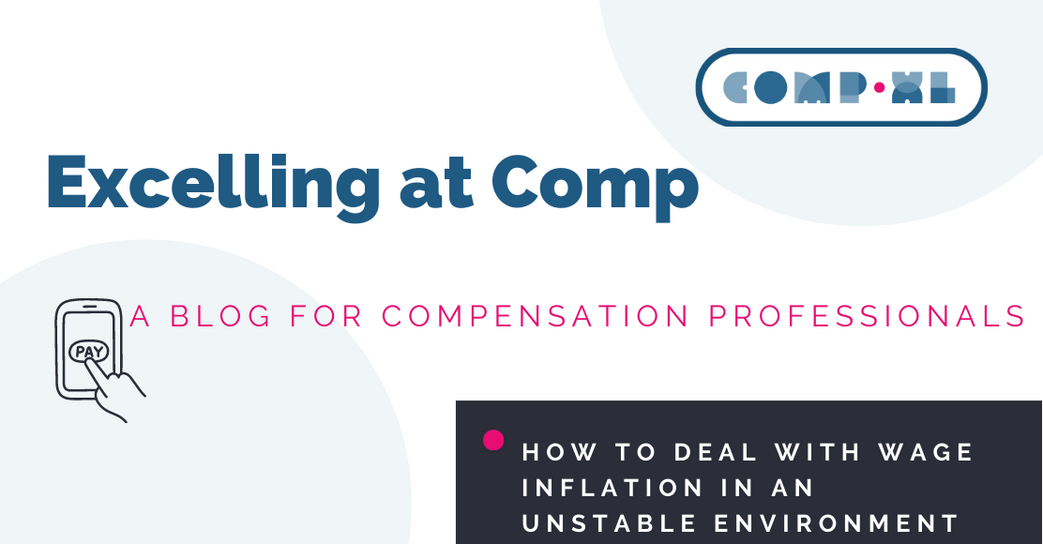How to deal with wage inflation in an unstable environment
By David Creelman
Many organizations are finding it challenging to hire the workers they need in today’s inflationary economy. This puts pressure on companies’ compensation departments to provide more attractive pay packages to retain talent. There are many options to consider when reevaluating compensation. However, various compensation plans hold both benefits and drawbacks. It is important to fully consider the scope and context in which compensation plans are enacted. Let’s look at how companies can make informed decisions in uncertain environments.
The challenge of choosing between multiple compensation plans is both technical and political. The technical part is selecting the optimal mix of compensation options that suit your business. The political part is that managers will produce suggestion after suggestion and, in each case, the compensation department has to warn about unwanted side effects—potentially making the compensation team very unpopular.
An effective approach to handling both the technical and political aspects of compensation decisions is to gather all the potential options – along with their potential side effects – and place them on a board. This will help focus the conversation on all the available options. Such a table would look something like this:
|
Option |
Unwanted consequences |
| Increase pay rates for new hires |
Dissatisfaction and turnover of existing staff who see this as unfair
|
| Pay everyone more via higher base pay (i.e., Move up pay ranges) | Expensive |
|
Pay everyone more via higher variable pay
|
Expensive, but not a fixed cost |
| Hire less qualified people (i.e., reduced quality of hire) | Reduced productivity |
| Use contractors |
Some dissatisfaction and turnover of existing staff who feel contractors are getting a better deal than they are
|
| Do nothing, wait and see |
Reduced productivity due to understaffing
|
This kind of table will prevent managers from assuming there is an easy solution to be made from pushing the compensation team. In practice, the best solution likely involves mixing multiple options while prioritizing your staff’s greatest needs.
You could easily add a column for “Wanted Consequences.” We’ve included one at the end of this article for those interested. However, that column is not emphasized here because managers should first recognize that all options may involve potentially painful tradeoffs. Managers should realize those tradeoffs exist rather than come away feeling that their compensation department isn’t really trying to solve their problems.
The “Do nothing, wait and see” option
It’s worth emphasizing the potential importance of the final option: “Do nothing, wait and see.” Even now, the media remains abuzz with stories about talent shortages for specific industries. Perhaps you exist in one of those industries. Those shortages may or may not last. Increased interest rates could slow down the economy, quickly ending the shortage of talent. As always, these solutions should be mixed together so the “do nothing option” can be seen as a suggestion to go easy on the other options rather than literally do nothing about compensation.
Being a responsible compensation leader
This exercise of dealing with multiple options is a great example of what being a compensation leader is all about. What we haven’t discussed yet is how fine-tuning the best mix of options will require a sophisticated understanding of the business. Comp managers need to know where being short-staffed is acceptable and where it is unacceptable. They need to know where contractors are available and they have to understand what sized increase it will take to attract in-demand talent. The compensation professional won’t know all the answers – that knowledge lies with the business leaders. However, the compensation leader needs to guide the discussion to help business leaders consider what mix of options is right for each part of the business.
Compensation is a difficult area to manage. It need not be unduly frustrating when approached in a systematic way that helps business leaders clarify their thinking. When there are tough decisions to be made, making those tough decisions is what good management is all about.
Extra: Table with a “Wanted Consequences” Column
| Option | Unwanted consequences | Wanted consequences |
| Increase pay rates for new hires |
Dissatisfaction and turnover of existing staff who see this as unfair
|
Able to attract good talent and fill vacancies |
| Pay everyone more via higher base pay (i.e., Move up pay ranges) | Expensive | Able to attract good talent and fill vacancies, while maintaining fairness |
| Pay everyone more via higher variable pay | Expensive, but not a fixed cost | Able to attract good talent and fill vacancies, while maintaining fairness |
| Hire less qualified people (i.e., reduced quality of hire) | Reduced productivity | Able to fill vacancies, while maintaining fairness |
| Use contractors |
Some dissatisfaction and turnover of existing staff who feel contractors are getting a better deal than they are
|
Able to get necessary work done without undue disruption to fairness |
| Do nothing, wait and see | Reduced productivity due to understaffing | Avoid the risk of pay increases that will look foolish if the economy turns down |

